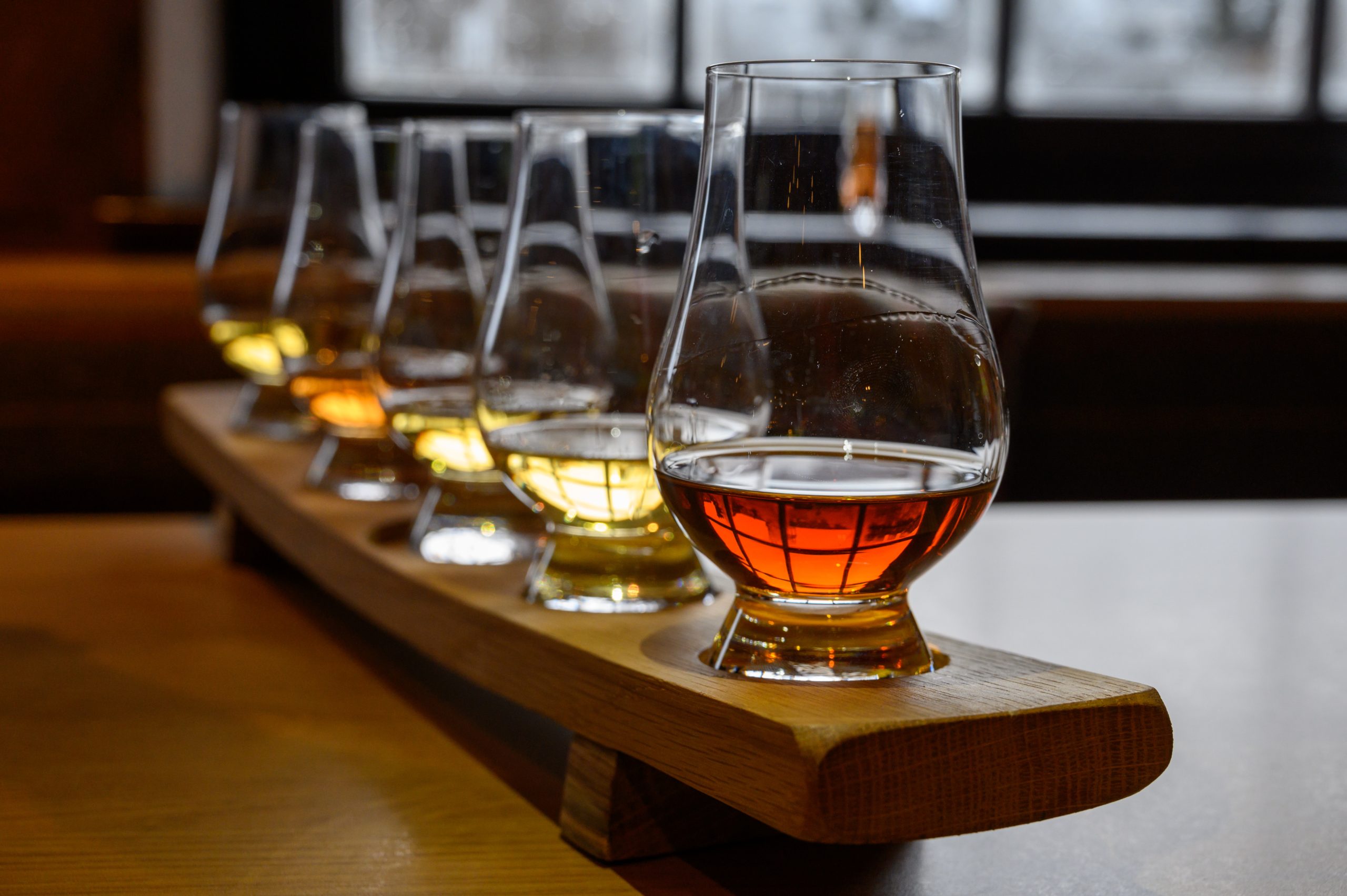The Copita
Another good option is the tulip-shaped copita glass. Like the Glencairn glass, the copita’s shape with a narrower opening and wider base is great for analysing and assessing a whisky. The main body of the glass sits on a thin stem that allows you to hold it without warming the spirit.
The copita glass was originally used in the bodegas of southern Spain for the sampling of sherries as they matured. The UK was the main export market for sherry and the copita travelled with it. The glass would be used by workers at British ports to check the quality of sherry upon arrival, becoming known as a ‘docker’s glass’ along the way.
The copita remains popular in the whisky industry and to a wider audience alike. They are often used for whisky tastings as they are particularly good at showcasing whisky aromas. The style of glass was adopted by the Scotch whisky industry, particularly blenders and Master Blenders, for this reason and they remain hugely popular.
The Quaich
Prior to glass becoming widely manufactured on a commercial basis, the vessel of choice for drinking whisky in Scotland was the quaich (pronounced quake, as in earthquake). This is formed of a central bowl with a handle on either side and was originally made of wood. The name comes from the Scots Gaelic word ‘cuach’, meaning cup.
Over time the wooden quaich evolved to become metal or pewter. Their ownership became seen as a status symbol amongst the Scottish clan leaders, but their popularity was short lived. They are now largely ceremonial or ornamental.
The quaich has also historically been used as a symbol of friendship. If two people drink from the same quaich in turn, then they are said to be bound in friendship forever. This custom remains today.





